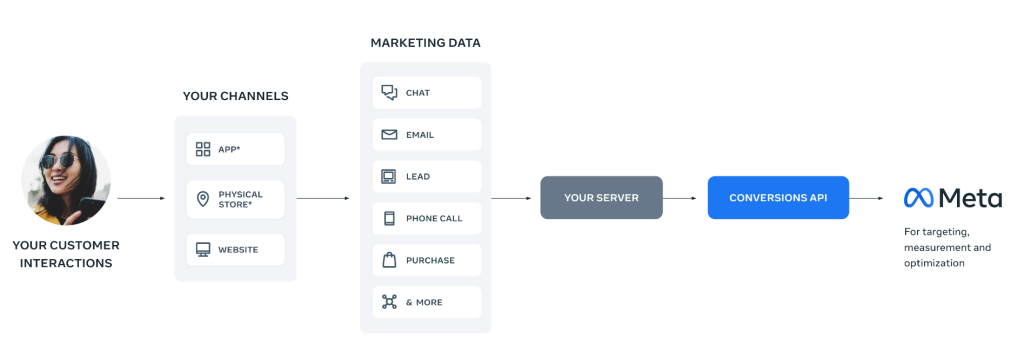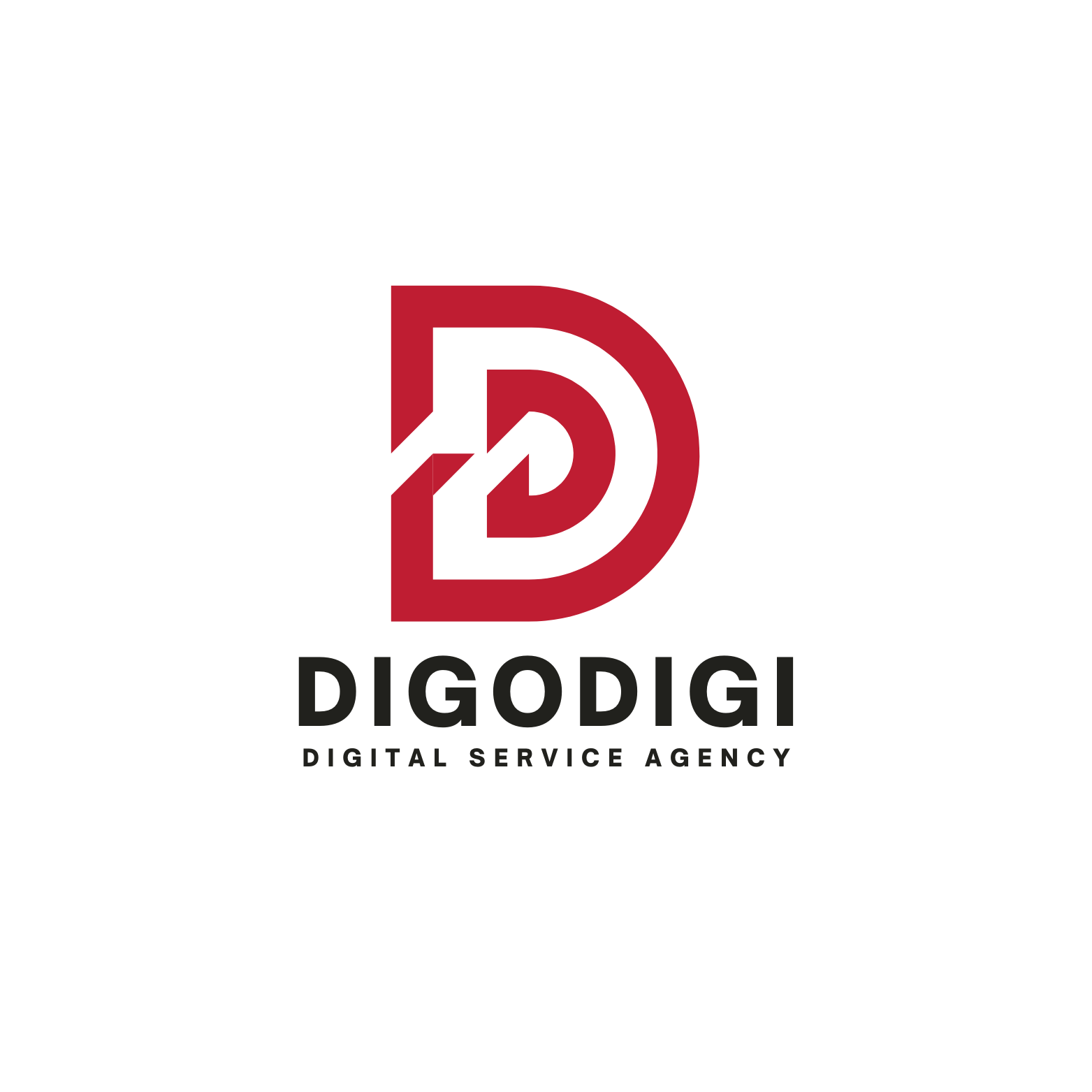Why Conversion APIs are a powerful conversion tracking tool?
In today’s digital age, tracking conversions is crucial for the success of any digital marketing campaign. Conversion tracking allows marketers to understand how their campaigns are performing and optimize them accordingly. Traditionally, web pixels have been used to gather conversion data, but consumer privacy concerns on the internet have lead to unreliability in the data gathered. Today, Apple provides iOS users with the option to opt-out of app conversion tracking. Additionally, instilled browsers restrictions and ad blockers have made it difficult to trust the accuracy of the data gathered.
In response to the data-gathering limitations of pixel tracking, major networks like Meta and Google developed their own end-to-end conversion tracking method called Conversion APIs. A Conversion API is a direct integration between your website and a network’s (like Facebook or Google) servers. Conversion APIs are extremely reliable as they are directly integrated with your company website and not impacted by browser restrictions. On the other hand, conversion APIs are more time consuming to implement than Facebook pixels and often require engineering resources.
In this article, we’ll dive into key differences between a web pixel and conversion API, the benefits of each, as well as how your team can get set up with conversion APIs.
What is a Facebook pixel?
A Facebook pixel is a piece of code that can be placed on a website or landing page to track user browser activity such as clicks, views or form submissions. The pixel event sends information back to an ad platform or analytics tool which then aggregates the customer data into reports.
Web pixels can be used to track a variety of actions in real-time, including:
- Page views: You can track how many people are visiting specific pages on your website.
- Conversions: You can track when someone completes a specific action on your website, such as making a purchase or filling out a form.
- Remarketing: You can use the data collected by the pixel to create custom audiences of people who have visited your website, and then show them targeted ads on Facebook.
Pixels include an easy setup process since they require minimal technical expertise, and are compatible with multiple systems including Google Analytics and Meta. Additional advantages of web pixels is that their event tracking has the ability to track most user interactions and enable cost-effective Facebook ad retargeting.
Although web pixels have their advantages, there are a few drawbacks:
- Lack of accuracy, especially when it comes to measuring time spent by users
- Difficulty in measuring accurate cross-device conversions
- Dependence on web browser settings which can lead to incorrect measurements
All in all, the Facebook pixel is a valuable tool that can help eCommerce brands track the effectiveness of their ad campaigns, but the data is gathered from third-party cookies and ad restrictions limit its reliability.
What is a conversion API?
A Conversion API is an integration that allows events to be shared server-side, making it much more reliable than traditional conversion tracking methods that are impacted by ad blockers and browser restrictions.

In addition, Conversion APIs have the below benefits:
- Improved accuracy in conversion tracking browser events since it eliminates discrepancies caused by ad-blockers or other factors
- Increased privacy compliance since all data is transmitted directly from servers instead of through a user’s browser
- Grant better control over the types of data being collected, allowing businesses to only track the events they care about most
Although conversion APIs are extremely powerful tracking and optimization tools, they do require more technical knowledge to complete setup than web pixels. Additionally, there is a higher cost associated with them due to maintenance and configuration.
With that being said, many conversion events are readily available in a data warehouse and can be supported through Reverse ETL, reducing the level of effort needed to begin using Conversion APIs.
What’s the difference between a conversion API and a Facebook pixel?
The primary distinction between Conversion APIs and Facebook pixels is the type of data they capture and share. Web pixels rely entirely on third-party cookies and client-side monitoring; this causes limitations as client-side monitoring can only capture browser activities and website interactions.
In contrast, Conversion APIs, or server-side tracking, can utilize first-party data gathered through the internal servers running your website or app. Conversion APIs are not limited by browser settings or third-party cookies, and you have no restrictions on the data you can collect or transmit.
You can use both Conversion APIs and Facebook pixels in conjunction with one-another, as Facebook’s conversion API automatically eliminates duplicate conversion events. Once you’ve transmitted your data to Facebook Business Manager, you can even analyze how accurately Facebook matches the data you supplied using the Events Manager feature and analyze your ad performance using Ads Manager.
Getting setup with Conversion APIs
The drawback of using a server event, or the Conversions API, is the amount of engineering time required to integrate one. However, with the appropriate architecture and implementation choices, the development effort and setup process can be significantly reduced.
In the remainder of this article, we cover how to get setup using our three key recommendations:
- Using the data warehouse as your data source
- Utilizing Reverse ETL to sync conversion data with conversion APIs
- Leveraging a platform like Lumanu or Shopify
Storing conversion data in the data warehouse
It’s likely that your engineering team has integrated with a solution like this in the past and has conversion data already imported into your data warehouse. Leveraging the events in your data warehouse in conjunction with a Reverse ETL significantly reduces the API setup effort and time. Rather than taking weeks or even months to get setup, set up can take only a few hours.
Chances are that your marketing teams have not stopped their advertising efforts, which means that numerous conversion events cannot be linked to the relevant campaigns. In other words, pixel-blocking browsers and devices are currently impacting your campaigns, and implementing a server-side api solution will lead to an immediate return on investment.
In addition, the data warehouse can store conversations that a web pixel isn’t capable of capturing, such as offline purchases and post-purchase events. Top-of-funnel and anonymous events, like add to cart, require a first party tracking tool. All in all, leveraging the data warehouse provides you with a full view of your customer data.
Getting started using Reverse ETL
Reverse ETL (Extract, Transform, Load) is a data integration process that involves extracting data from a data warehouse or other storage systems, transforming it into a format that can be understood by various applications, and loading it into those applications. Unlike traditional ETL, which moves data from operational databases to a data warehouse, reverse ETL moves data from a data warehouse back to operational systems or other applications.
In the context of Conversion APIs, Reverse ETL can be used to synchronize conversion data stored in a data warehouse with the APIs, making it easier to attribute conversions to specific campaigns or channels.
To get setup, first select the Reverse ETL tool you would like to use. Then you will:
- Provide the Reverse ETL tool with access to the appropriate tables in your data warehouse
- Match the columns and identifiers to the format required by the Reverse ETL tool
- Schedule your data sync
